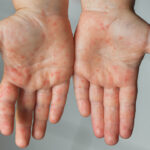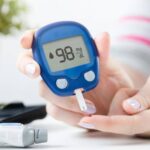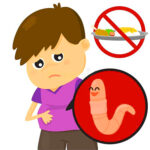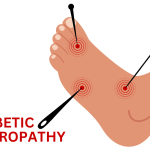Let’s know about Children diabetes and all about the risk factors and dos and don’t. The incidence of diabetes is also increasing among children. Most children develop type 1 diabetes in childhood.
However, the number of children with type 2 diabetes has started to increase. Doctors used to know that only children develop type 1 diabetes, and this has long been referred to as juvenile diabetes. Being overweight is the single leading cause of type 2 diabetes in children. When a child gains too much weight, their risk of developing diabetes doubles.

In children with type 1 diabetes, there is a deficiency in the production of insulin in the body. In this case, insulin is needed to survive. Insulin deficiency is supplemented by insulin injection or pump.
The pancreas loses its ability to make insulin because it destroys the insulin-producing cells. No one knows exactly why this happens, but scientists believe it is linked to genes. Type 1 diabetes is probably caused by a virus infection. On the other hand, in type 2 diabetes, there is no disruption in the production of insulin in the pancreas.
However, the body does not respond normally or fails to respond. This problem occurs due to insulin resistance when glucose cannot enter the cells and the ability to supply energy is reduced. This causes the blood sugar level to rise, causing the pancreas to gradually produce more and more insulin. Eventually, at some point, the pancreas gradually becomes unable to produce enough insulin to keep blood sugar levels normal.
Three Risk Factors for Children with Type 2 Diabetes
* If a family member has type 2 diabetes.
* Children born with gestational diabetes (gestational diabetes).
* If the child is overweight and has the above two risk factors.
Symptoms of Children diabetes
Frequent urination due to high blood sugar will make you very thirsty, so drink plenty of water. Feeling tired or exhausted. Because the body cannot use glucose properly for energy. Children and adolescents with diabetes may have increased appetite, but in an effort to provide fuel to the hungry cells, the body breaks down muscle and stores fat, which leads to weight loss.
Treatment of children diabetes
It is important to diagnose whether the child has type-1 or type-2 diabetes. This is because the control and treatment of diabetes differ depending on the type. It may be necessary to take a drug called metformin. It and insulin are the only two blood-sugar-lowering drugs for children under 18 years of age.
Treatment means better control of diabetes to reduce symptoms, prevention of health problems, and social growth and development of the child while maintaining his physical, mental, sensitivity naturally. And for that, parents need to keep the child’s blood sugar level within the target range as much as possible.
There is no cure for diabetes, lifelong treatment is required for diabetes. Children and adolescents with type 1 diabetes rely on daily insulin injections or insulin pumps to control their blood glucose levels. In children with type 2 diabetes, the symptoms develop slowly and have no symptoms at first. The disease is sometimes detected during regular check-ups.
Complications from children diabetes
Uncontrolled diabetes can lead to heart disease, blindness, and kidney failure in the future. Even uncontrolled diabetes increases the risk of death. Diabetes also increases the risk of narrowing blood vessels, hypertension, and stroke later in life. Nerves are damaged.
Resistance
The problem of type 2 diabetes is increasing among the youth. It is possible to prevent this horrible condition by changing the health awareness and lifestyle of the parents. Obesity or those who are overweight, especially those with high belly fat are more likely to have insulin resistance or insulin resistance, so insulin resistance is a major risk factor for type 2 diabetes. Insulin resistance usually has no symptoms, although some babies develop a thick, dark, velvety patch on the skin called acanthosis nigracans, usually at the creases and folds of the body, such as the back of the neck or armpits.



















